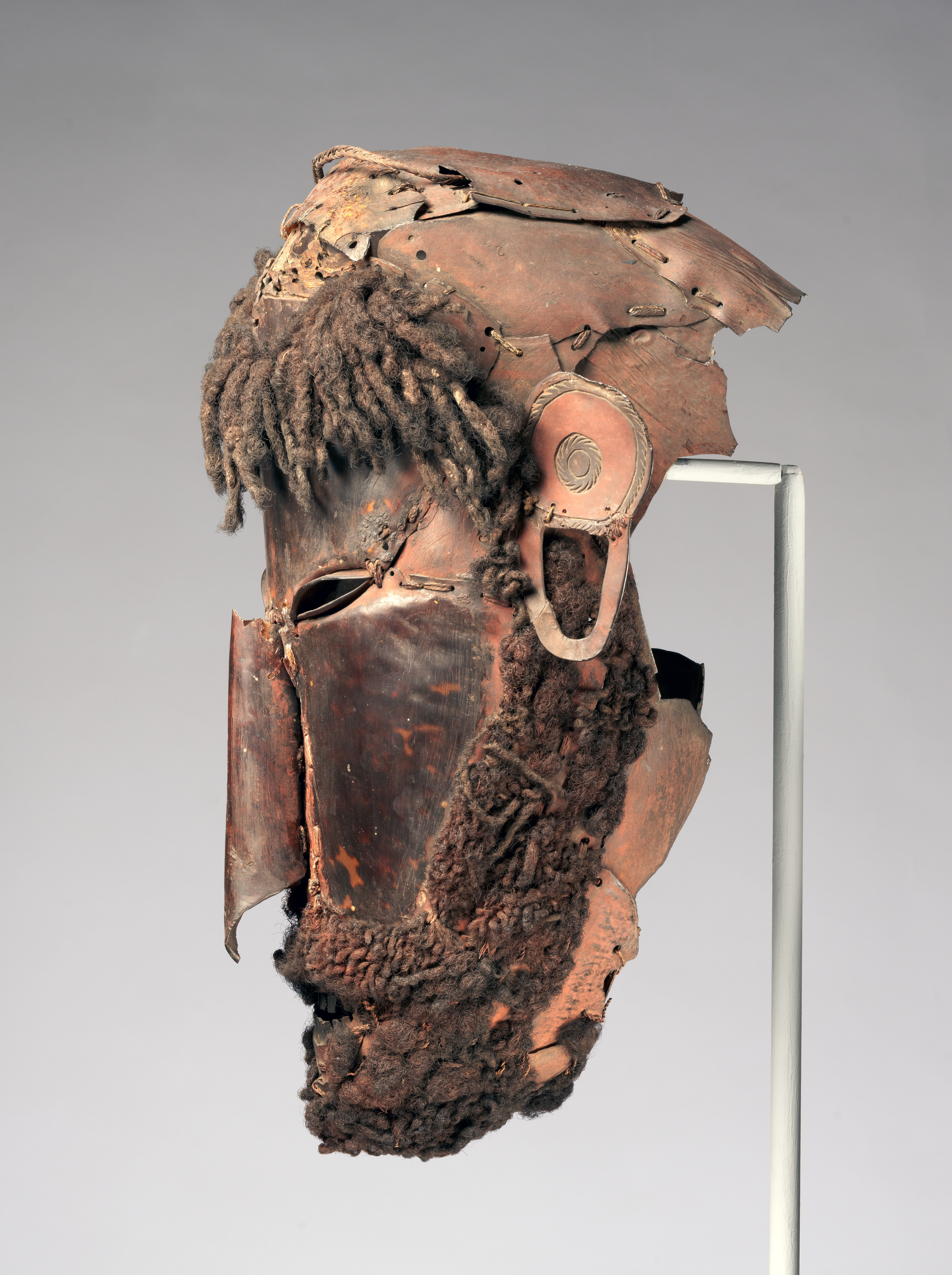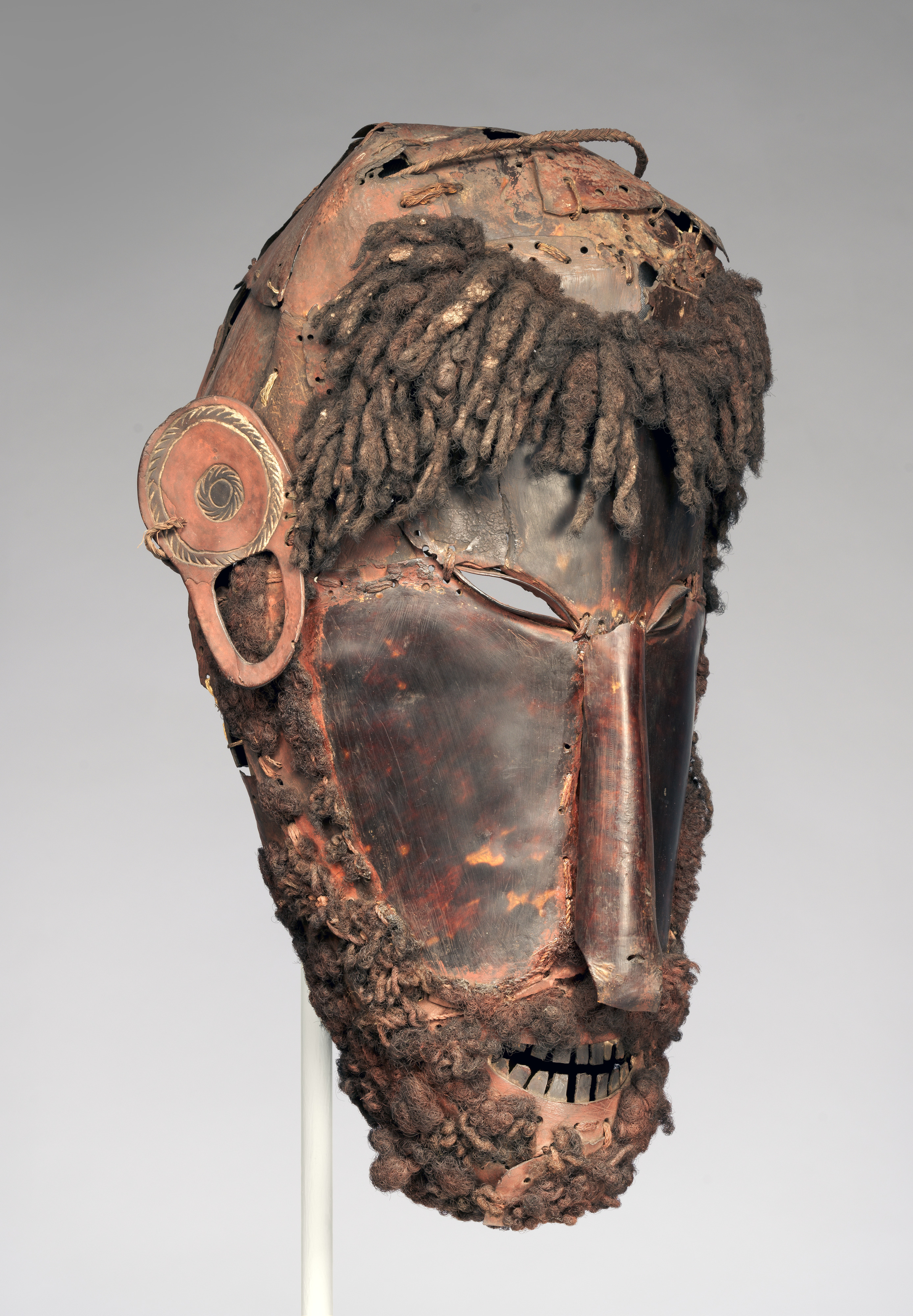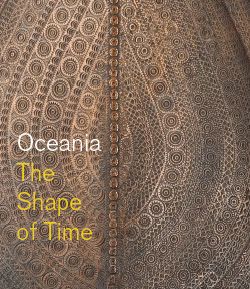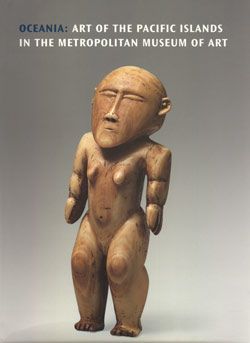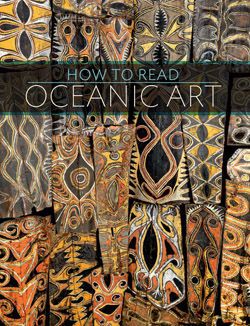Mask (Le Op)
The artists of the Torres Strait Islands between Australia and New Guinea have a distinctive series of artistic traditions. In the past, the signature art form of the Torres Strait Islanders was their unique turtle-shell mask, which was used in a variety of ceremonial contexts. The creation of masks or effigies made from turtle shell was a centuries-old tradition that was first witnessed by Westerners in 1606 and continued until the end of the nineteenth century. The forms, materials, and imagery of Torres Strait masks varied from region to region. In the eastern Torres Strait, turtle-shell masks, known as le op (human face), almost universally took the form of human images adorned with lifelike coiffures and beards of human hair. Equipped with an opening on the underside, which allowed it to be slipped over the head, the mask completely covered the performer's head and face when worn. Le op masks appear to have been used in initiations and, possibly, in other rites. However, they were primarily employed in funerary ceremonies held to honor and appease the spirits of the deceased, enabling them to travel to the island of the dead, which lay in the direction of the setting sun.
This image cannot be enlarged, viewed at full screen, or downloaded.
This artwork is meant to be viewed from right to left. Scroll left to view more.


